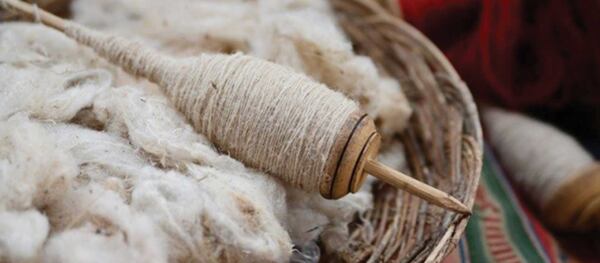
What is wool?
The short answer – wool comes from the fleece of sheep and is used to knit sweaters and make winter jackets.
If only it were so simple.
Current European legislation (EU regulation 1007/2011) states that wool is “fibre from sheep’s or lambs’ fleeces (Ovis aries) or a mixture of fibres from sheep’s or lambs’ fleeces and the hairs of [some other] animals.” (The regulation lists those “other animals” – we’ll cover that below.) There is no requirement that manufacturers state the percentual make-up of the individual animal fiber types in wool, but companies aren’t shy about letting the world know when their wool contains alpaca or cashmere. When it comes to synthetic fibers, the content percentage must be given. Wool is generally combined with polyamides or acrylics but is also often mixed with silk or cotton.
Wool cannot be labeled just with the breed name (for example just merino). But the breed can be displayed on the tag as an additional qualifier. The tag on a merino wool sweater, for example, must include word wool and the percentage – so “100% merino wool” is correct but “100% merino” is not. If an item is one hundred percent wool, you can swap out the 100% for the words pure or all. (This applies for other materials too.)
Wool may be categorized by the type of animal or breed of sheep that it comes from and by its quality, origin, and character.
Then there’s virgin wool, which can also be labeled that way. That brings us to the individual types of wool. You see, all wools are not created equal.
Breeds of sheep
Sheep (like horses, chickens, and other farm animals) come in a fantastic variety of breeds. Some are kept for meat, others for their wool. There are special breeds for skins and milking and others kept as pets, like the friendly, docile Cameroon sheep that you find at the petting zoo.
Wool breeds can be sorted by the qualities and fineness of their wool. There are breeds that have a single-coated fleece made up of one fiber type; these give very fine, soft wool. Those with a mixed-hair fleece have three types of fibers: True wool, hair, and kemp. Kemp is long and coarse while true wool is soft and fine. The more kemp and hair in the fleece, the rougher and scratchier it is.

Wool falls into five basic grades of fineness, with certain breeds that typically fall into each category. An individual fleece’s quality also depends upon the sheep’s diet and living conditions, so some breeds may fall into more than one category depending upon circumstances.
Superfine wool breeds
These breeds are not usually seen on large sheep ranches as they demand a lot of individual attention. They include some types originally bred in Spain.
Fine wool breeds
Fine wool breeds include Merino (Australian Merino, South African Merino, Merinolandschaf), Charollais, and Shetland.
Medium wool breeds
Medium wool breeds are usually kept for their meat or milk, but their wool is used as well. They include English breeds such as Suffolk, Norfolk, and Kent sheep, Hungarian Cigája, East Friesian sheep, and Texel.
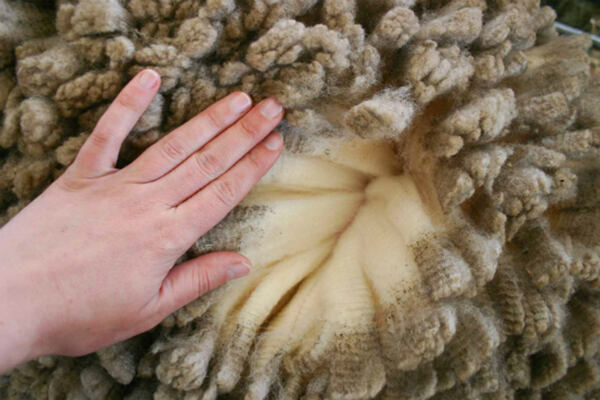
Coarse wool breeds
Coarse wool breeds are all-purpose sheep that can be raised just about anywhere. They include the Leicester Longwool, Lincoln, Cotswold, and mountain pasture sheep like the Sumava in Bohemia.
Carpet wool breeds
These sturdy breeds yield rougher, lower quality wool that is more suited for technical applications. They include Wallachian and Romanov sheep from central and eastern Europe.
The textile industry has its own quality grading system that rates the fineness, length, crimp, and spinnability of wool. Only very good quality wool is used for making fabric. The coarser wools are used to make carpets, felt, and technical textiles.
Types of wool
Merino wool
Merino is the best known and most popular of the fine wools. The finest merinos are so soft that you can wear them comfortably against your bare skin, making them a premium choice for undergarments, thermal base layers, soft scarves, and childrenswear.
Virgin wool
Virgin wool (or fleece wool) is made exclusively of new fibers that went straight from the sheep into production (as opposed to recycled wool). It is naturally superior, with a longer fiber and uniform quality. Virgin wool can be marked as such on the label – it doesn’t have to be, but why hide your light under a bushel?
Recycled wool
Recycled wool is the opposite of virgin wool. It is made up of manufacturing scraps – bits of broken thread from the spinner, pieces of felt, and cuttings left over from garment production – that are separated into individual fibers and re-spun. The process tends to shorten and damage the fibers. Wool cannot be recycled forever and recycled wool fabrics tend to be of poorer quality.
If the manufacturer does not state it outright, there’s really no way to tell which type of wool was used – virgin or recycled.
Worsted wool
Worsted wool is brushed wool of high quality with long staple length. During production the fleece is carefully brushed to remove the shorter fibers, leaving only those that are 3 to 6 inches in length. These long fibers are spun into a soft, smooth, strong, worsted yarn that is used to make worsted fabric. The resulting fabric is smooth, without the itchiness typical for coarser wools, and is resistant to pilling.
Worsted wool gets its name from the English village of Worstead, in Norfolk, which was renowned for its quality woolen fabrics in the nineteenth century.
Woolmark
Woolmark is a certification brand used to mark top-quality wools that fulfil strict criteria set by the Woolmark Company. If you see their mark on the label, you can be certain that you have bought a garment from a manufacturer that insists on first-rate materials. Certification must be applied for, however, and there are top-quality wools that do not have it. You are most likely to see it in brand-name wool overcoats, suits, or sweaters.

Wool from other animals
The European Union regulation for textile labeling includes a list of animals whose fur may also be labeled as wool. These include the alpaca (WP), llama, camel (WK), cashmere (WS) from cashmere goat, mohair (WM) from agora goat, cashgora goat (a crossbreed of cashmere and angora goats that yields cashgora), angora (WA) from angora rabbit, vicuña, yak, guanaco, beaver (WB), and otter. Beaver and otter are used almost exclusively to make felt hats.
Most of these materials are of high quality and each probably warrants a whole blog post of its own. For the time being, all you need to know is that if a manufacturer adds alpaca or cashmere to their wool, it certainly isn’t in an attempt to short-change their customer. Quite the opposite, they generally do so in order to improve certain qualities of their wool fabric, to make it lighter or warmer for example.
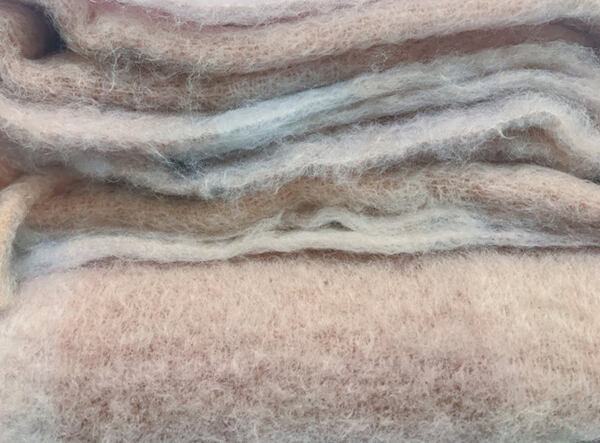
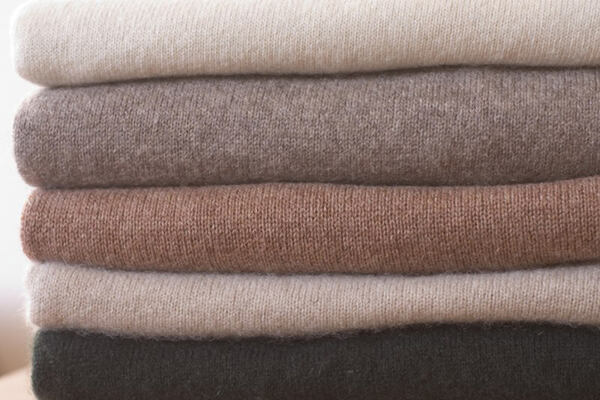
Alpaca (left) and cashmere (right) are exceptionally soft, fine wools
Characteristics of wool
Like other natural fibers, wool has plenty of wonderful qualities. That doesn’t mean it’s perfect for every task, but there are areas where it can’t be beat. Here are some of the basic characteristics of wool.

Wool is warm. A thick, wool sweater will keep you toasty when there’s a nip in the air. Merino base layers are a must on any polar or mountaineering expedition. One of wool’s superpowers is that it keeps you warm even when it gets wet, so if you get rained on or you break a sweat, you won’t catch cold.
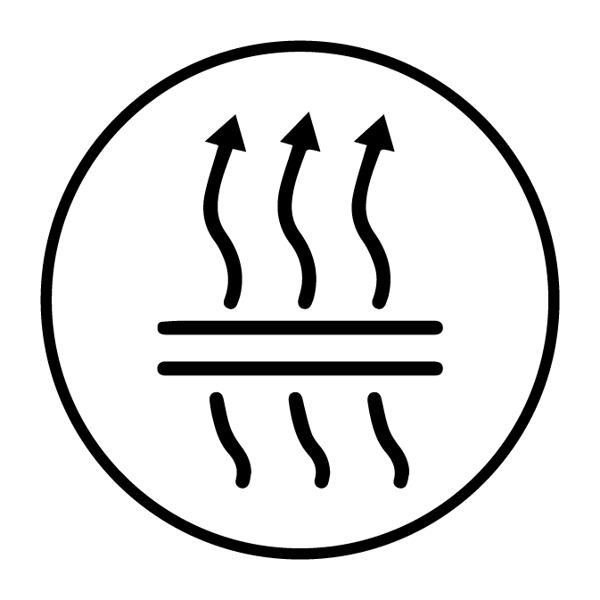
Wool breathes. Even as it keeps you warm, wool lets the air through. A wool suit with a good-quality lining is far more comfortable than a polyester leisure suit, just as a wool sweater breathes better than an acrylic pullover. For the same reason, a wool blanket is just the thing for a good night’s sleep.

Wool is beautiful. It can be made into a wonderful assortment of gorgeous fabrics in any color of the rainbow. Have a browse through our wool fabrics section to see our hand-picked selection.

Wool is hygienic. It inhibits bacterial growth and won’t absorb nasty odors. Wool thermalwear and clothing are invaluable on long hikes and campouts where you’re at the mercy of the elements.
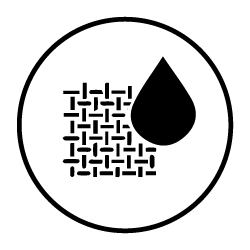
Wool is stronger dry than wet. For this reason, be cautious when washing and drying your wool items. Hand wash your wools or use a delicate program. Don’t wring them (press water out gently). Lay them flat to dry. Careful handling helps prevent surface damage and will keep your garment from pulling out of shape (especially with knits).
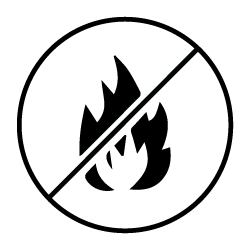
Wool does not burn. You may not think about it every day, but wool’s flame resistance can come in handy when you’re sitting around the campfire. Wool doesn’t catch fire readily, and it extinguishes as soon as it’s removed from the flame. This makes it safer than acrylics, cotton, or polyester.
Wool isn’t damaged by acids, but keep it away from alkaline solutions. Fleece goes through an acid wash during processing without suffering any harm but when exposed to an alkaline, its fibers become brittle and yellow. That’s why you should never wash your woolens with ordinary laundry detergent. Use special wool (or silk) washing products only. If you have no alternative, you might use a mild shampoo.
How to tell real wool
If you have been wearing or working with wool for a while, you probably know it when you feel it. But if you’re not quite sure, a simple burn test will reveal if what you’ve got in hand is wool or not.
Take a bit of the fabric or yarn that you want to test and place it in the flame of a candle or cigarette lighter. Wool starts to burn very hesitantly and goes out the moment you pull it from the flame. It gives off a pungent smell of burnt hair. After burning, it leaves a charred, black crumb that you can crush easily between your fingertips.
Silk behaves in much the same way when it burns… but, honestly, silk and wool fabrics look and feel so different that you’re not likely to confuse them to begin with.
Acrylic, on the other hand, won’t go out when pulled from the flame – it burns in a quick flame that sheds sparks. The smoke has an unpleasant, synthetic odor.
Polyester burns more slowly and leaves behind a hard, black ball that cannot be crushed between the fingertips.

How wool is made
Wool begins its journey in the sheepfold, where the fleece is sheared from sheep once a year (or more, depending on the breed). Shearing is an absolute necessity because wool grows continually and would soon swallow up the poor sheep if it weren’t cut off. The fleece is usually removed with the help of electric shears, a job an experienced hand can manage in a couple of minutes.
The fleece is trimmed of its unusable parts (wool from the leg and tail areas) and given a quick picking over before being sent on for further processing. This starts with dusting – a process of shaking out the fleece to remove dust, pebbles, bits of vegetable matter and so forth – and continues with scouring to remove the sweat and lanolin from the wool. In scouring, the fleece is washed in running water with a special wool detergent or with a solvent that effectively removes grease. Remaining bits of vegetable matter are removed by carbonization – the fleece is put through a mild sulfuric acid wash that turns the detritus to ash.
Once it has been washed and dried, the wool is fed into a carding machine that aligns the fibers in one direction, forming a sheet called a web. This is divided into thin strips for spinning. Wool that has longer, finer fibers can be spun into worsted, a wool of better quality that is often used for fine suiting and garment fabrics.
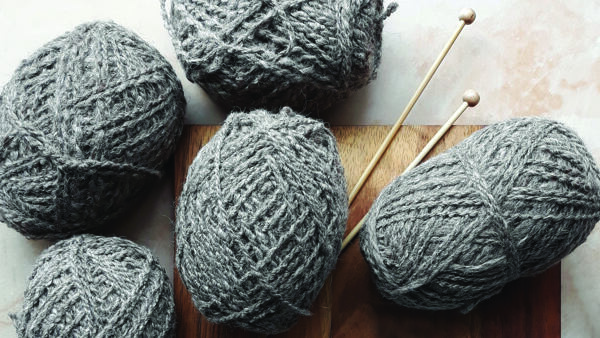
Wool yarn
Sartor doesn’t carry wool yarn, but as a diehard knitter, I can’t resist mentioning it. If you are interested in quality fabrics for sewing, but don’t know your way around a pair of needles, you may be interested to know that there are treasures to be found in the knitting world too.
Knitting has enjoyed a renaissance of late, much like sewing and other home crafts. The whole world seems to have taken up their needles and yarn makers have responded with a great selection of beautiful products. Sewing shops have begun stocking more than run-of-the-mill acrylic yarns (which, admittedly, are great for beginners because they’re so inexpensive) and there are a number of specialty shops that offer true luxury yarns such as:
- Superfine merino – soft and smooth even against bare skin, for scarves, hats, socks
- Wool blends (merino) with silk, alpaca, 100% silk yarn or alpaca yarn, silk with mohair, and other combinations of wool, alpaca, silk, cashmere, linen, and more
- Trendy hand-dyed yarns in unbelievable fades and color effects
- Ultrathin yarn for knitted lace
Head over to the knitting portal Ravelry.com for tutorials and an exhaustive database of yarns. There’s also lots of great window-shopping to be done at Filcolana, Fyberspates, Iso, Istex, Lang Yarns, Malabrigo, Noro, Rown, and Schachenmayr.
A brief history of wool
For an overview of the history of wool from the domestication of sheep up into the Middle Ages, head over to our article on wool fabrics through the ages. Wool is an ancient material, used by humankind for thousands of years.
Its more recent history, at least from where we sit here in central Europe, is a bit sad. Wool was a common product in Europe throughout the twentieth century. Each country had its wool industry and most had an established specialty – Italian suiting, English tweed, Austrian loden, Scandinavian broadcloth.
The Czech Republic, where we are based, exported excellent Woolmark fabrics to all corners of the globe. After the fall of the Iron Curtain in 1989, the command economy in Czechoslovakia quickly unraveled and one textile factory after another went under. Brno, once a textile powerhouse known regionally as the “Manchester of Moravia” lost its flagship wool mill and Czech sheep ranchers lost their biggest customer.
With the global economic slowdown in 2008, imports of cheap wool from Asia and South America dealt the final blow to the European wool industry.
Hope springs eternal, however, and a growing interest in quality fabrics and slow fashion may yet present some hope for European wool producers. Luxury clothing makers have consistently demonstrated a commitment to acquiring quality material from European sources, and local ranchers are once again bringing their fleeces and yarns to market for a new breed of customers who are willing to invest in traditional crafts and handiwork.
In purchasing wool from us, you are doing your part to support the great European wool tradition – the wool fabrics you see in our core collection come directly from selected German and Austrian mills.
Have you got any woolens in your closet? Do you sew or knit with wool?
Share your stories and show off your creations!



Comments(1)